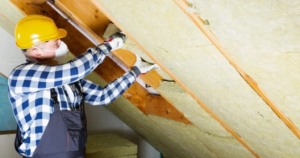What You Need to Know About Search Engine Optimization (SEO)
SEO is a cost-effective way to generate recurring, relevant traffic. It also helps build brand recognition, authority, and trustworthiness.
SEO includes writing unique content that is optimized for search engines. Webpages, including articles, are what search engines like Google index to show in their results. Visit Website to learn more.

Search engine optimization is an ongoing process. StayingIt’s up-to-date with the latest news, research, and best practices is essential.
Keyword research
Keyword research is a huge part of search engine optimization (SEO) because it helps you determine your audience’s words and phrases to find your products, services, or general information. It also allows you to identify opportunities for content marketing campaigns that will help you reach and engage your target audience.
You can start your keyword research by using a tool like Semrush to look up the keywords that people use to search for your business. This tool can help you create a list of related keywords and even tell you how many searches they receive. The tool can also help you prioritize your keywords based on their search volume and competitiveness.
Researching keywords can be time-consuming, but investing the effort is important because the results can pay off big time in terms of traffic and conversions. It’s also important to remember that not all keywords are created equal. While some may have high search volumes, they may be highly competitive and difficult to rank for. Other keywords might be less popular, but they could be easier to rank for and have higher intent.
Once you’ve identified your target keywords, you can begin to plan your SEO campaign. This is a crucial step because it will give you the direction you need to take to optimize your website and create new content. It will also help you understand how your competitors are attracting their audiences and what type of content they’re producing.
When choosing your target keywords, make sure you balance a focus on popularity with a focus on the value of the term. Often, marketers get hung up on the search volume and think that they need to target every keyword that has a decent search volume. However, this is a mistake. It’s more important to find the right mix of keywords that will provide the most relevant traffic and convert into customers.
Another way to prioritize your keywords is by conducting a competitor analysis. This involves analyzing the keywords that your competitors are targeting and the keywords they’re ranking for. A tool like Ahrefs or SEMrush can show you the keywords that your competitors are ranking for and how much traffic they’re getting from those keywords. This will help you figure out which keywords to target and how to optimize your meta tags and descriptions.
On-page optimization
On-page optimization is the process of optimizing web pages to improve search engine rankings. It includes everything from keyword research to content development and HTML optimization. While it doesn’t necessarily guarantee higher search engine results, it is a necessary step for a successful SEO strategy.
There are several factors that impact on-page optimization, including keywords, title tags, and meta descriptions. The most important factor, however, is the quality of the website’s content. It should be high-quality, relevant, and provide a good user experience. It should also use keywords sparingly and in a way that provides a natural, reader-friendly experience.
Another factor is site structure, which involves ensuring that internal and external links are pointing to the most appropriate page. This will help Google determine a webpage’s relevancy and authority. It is also important to use structured data markup, which helps search engines better understand the content of a webpage.
One other on-page optimization factor is URLs, which are the unique addresses that identify pages on a website. These should be short, contain keywords, and use hyphens rather than underscores to separate words. Another on-page optimization tactic is to avoid using complex graphics, which can slow down a webpage’s load time and affect its SEO.
In addition to on-page optimization, a comprehensive SEO strategy should include off-page optimization. This involves building links and social media engagement, both of which improve a website’s ranking in organic search results. However, it can take some time to see results from off-page optimization.
On-page and off-page optimization are both essential parts of a digital marketing strategy, and they work together to maximize a website’s visibility. Taking a holistic approach to SEO will result in the highest possible visibility and traffic. To learn more, check out this 10-step on-page optimization checklist. This guide will walk you through each of the 13 crucial on-page optimization tactics, from keyword semantics to HTML tags and website architecture. With this knowledge in hand, you can begin to optimize your webpages for the best results.
Off-page optimization
In addition to on-page optimization, off-page SEO is a vital component of any online marketing strategy. It refers to external factors that influence your search engine rankings, such as backlinks, social media signals, and local citations. It can also help you achieve your business goals, such as driving more traffic to your website and boosting your brand awareness. However, it takes time and effort to build a strong network of quality off-page SEO factors. It can also be difficult to compete with websites that have more links and better off-page SEO.
While on-page optimization focuses on website elements, off-page optimization aims to improve the website’s popularity, relevance, and trustworthiness by getting other reputable websites to link to it. This is achieved by promoting the site through guest posting, social media marketing, and other strategies. However, it’s important to note that off-page optimization has less control over the final ranking than on-page SEO. For example, if a website with a high link score suddenly decides to remove your backlink, you’ll have less control over the effect on your rankings.
The most common off-page SEO techniques include link building, social media marketing, and local citations. However, many small businesses don’t have the time or resources to implement all of these strategies. It is therefore important to focus on the ones that are most effective for your unique business needs. In addition, it is important to keep in mind that off-page SEO is a long-term process and requires consistency.
A good off-page SEO strategy will include links from relevant websites, social media mentions, and customer reviews. According to a recent study by Backlinko, the top search engine results pages have 3.8 times more backlinks than those in the second and tenth positions. However, the quality of those backlinks is essential. Ideally, your off-page SEO should consist of quality and high-authority links from related websites that are in your niche. This will increase your page authority and boost your organic search visibility. Other off-page SEO techniques to consider include content promotion and outreach, competitor link-building, and broken-link analysis.
Link building
Link building is one of the most important aspects of SEO, but it can be challenging to do correctly. If you want to boost your SEO rankings, it’s essential to build high-quality backlinks. These links help search engines determine if your content is popular and valuable, and can also increase traffic to your website. However, there are a few things you should keep in mind when doing link building.
For example, you should always avoid spammy link-building tactics like buying links or posting in forums and communities. These types of links are easy to get, but they don’t have much value in the eyes of Google. Instead, try to earn your links by creating interesting content that people will want to link to.
Another important aspect of link building is making sure your links are relevant to the topic you’re targeting. For example, if you’re trying to rank for “car insurance,” you should aim for links from authoritative websites in your niche. These links will have more value than links from low-quality blogs.
If you’re serious about improving your SEO, you should consider using a tool like Moz Pro to get the most out of your link-building strategy. The tool helps you find opportunities for new links, understand your competition’s links, and analyze your own links. It also allows you to create a link map of your website and track your progress.
In addition to increasing the number of links, link building can also help you establish your brand as an expert in your niche. When done correctly, it can lead to more organic traffic and improve your SERP ranking. For this reason, many major marketing agencies use it as one of their top strategies.
When it comes to link building, there are several techniques that can be used to get the most out of your campaign. These include broken link building, reclamation link building, and the so-called skyscraper technique. Each of these methods has its pros and cons, so it’s important to choose the right one for your campaign. In addition, it’s important to stay away from spammy tactics, which can hurt your site and cause you to lose valuable traffic.








